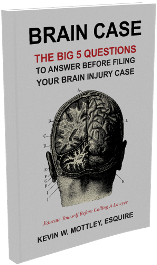At our Virginia brain injury law firm, we were excited to hear of the developments in science to diagnose and determine the extent of some brain injuries.
A team of researchers led by Dr. Marcello Massimini, a neurophysiologist at the University of Milan, reported their findings in the academic journal, Science Translational Medicine. The measuring tool they designed will give researchers a unique look inside the brain and the ability to measure various levels of consciousness. This can be particularly helpful when a person appears to be in a vegetative state after a traumatic brain injury, yet may still be aware of her surroundings.
Although the research is still in the experimental phase, many doctors are asking is how to use this new measurement power without raising false hopes for family members of brain injury patients. It is still unclear what level of consciousness after an injury predicts recovery. However, it is anticipated that doctors will someday be able to check consciousness levels easily and effectively. Because a person’s level of consciousness fades and grows continuously, researchers believe that this tool can determine how active a person’s brain may be under varying circumstances.
Currently, doctors determine the impact and severity of a brain injury by certain actions patients are able to do, such as blink or move a limb. Scans of electrical activity are also frequently used to determine consciousness.
Brain injuries are very difficult to diagnose. Consciousness is critical for doctors to determine quickly after an accident. The extent to which someone is conscious can impact the chances of recovery. As this tool continues to be developed, there is hope for future Virginia brain injury victims to get the diagnosis they need quickly so that they can increase their chances for recovery.




